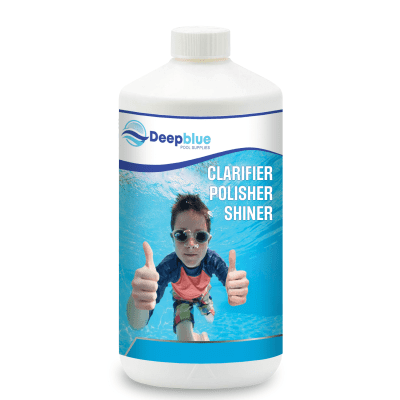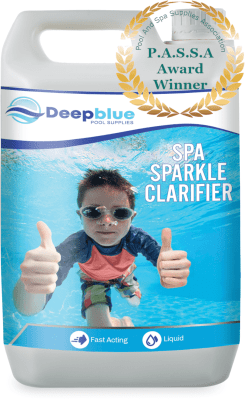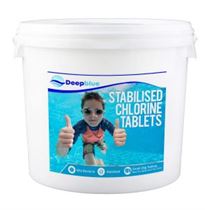As the days get shorter and temperatures drop, it’s time to think about closing your pool for the winter. Proper winterization is crucial for protecting your pool from freezing temperatures, debris, and potential damage during the colder months. Failing to close your pool correctly can lead to costly repairs come spring, so it’s worth taking the time to do it right.
This comprehensive guide will walk you through the essential steps to safely close your pool for the winter. From cleaning and balancing the water to covering and protecting your pool equipment, you’ll learn everything you need to know to keep your pool in great condition, ready to reopen when warm weather returns.
—
**Why Winterizing Your Pool is Important**
When water freezes, it expands. This is bad news for your pool if it’s not properly winterized. Freezing water can cause:
– **Cracked pipes**
– **Broken pool equipment**
– **Damage to the pool liner**
Additionally, a pool left uncovered or poorly maintained during the winter can collect leaves, dirt, and debris, leading to algae growth or damage to your filtration system. Winterizing helps prevent these issues and protects your investment, ensuring a smooth pool opening in the spring.
—
**Step-by-Step Process for Closing Your Pool**
Follow these steps to properly close your pool and safeguard it throughout the winter months:
—
**1. Clean the Pool Thoroughly**
Before closing the pool, make sure it’s as clean as possible. Any dirt, debris, or algae left in the pool over the winter can lead to bigger problems when you reopen.
– **Skim the surface:** Use a skimmer net to remove floating leaves, insects, and debris.
– **Vacuum the bottom:** Use a pool vacuum to clean the bottom of the pool, paying extra attention to corners where debris tends to accumulate.
– **Brush the walls and floor:** Scrub away any algae or dirt with a pool brush to ensure no contaminants remain.
This cleaning step is critical because anything left in the pool will only get worse over the winter.
—
**2. Balance the Water Chemistry**
Balancing your pool’s water chemistry is crucial before closing it for the season. Properly balanced water helps prevent staining, scaling, and algae growth, and protects your pool liner and equipment from damage.
– **pH Level:** Aim for a pH between 7.4 and 7.6. Use **pH increaser (sodium carbonate)** or **pH reducer (muriatic acid)** to adjust levels.
– **Alkalinity:** Ideal alkalinity should be between 80-120 ppm. To increase alkalinity, add **baking soda** at a dose of **1.5kg per 10,000 liters** of water.
– **Calcium Hardness:** Keep calcium hardness levels between 200-400 ppm to prevent scaling. Adjust with **calcium chloride** if needed.
– **Chlorine:** Shock the pool to raise chlorine levels to 5-10 ppm, using **500g of chlorine shock per 10,000 liters** of water.
After adding chemicals, allow the pool to circulate for at least 24 hours to ensure the water is properly balanced.
—
**3. Add Winterizing Chemicals**
To prevent algae growth and protect the water over the winter, you’ll need to add a few extra chemicals specifically designed for winter pool care.
– **Algaecide:** Add **200ml of winter algaecide per 10,000 liters** to prevent algae blooms during the off-season.
– **Metal Sequestrant:** If your water has high metal content (copper or iron), add a metal sequestrant to prevent staining.
– **Pool Enzymes:** Consider adding pool enzymes to help break down organic matter like leaves, oils, and bacteria that could build up under the cover.
These chemicals work together to keep your water clean and clear throughout the winter, making your pool opening much easier in the spring.
—
**4. Lower the Water Level**
Freezing water can damage pool skimmers and plumbing, so it’s essential to lower the water level before freezing temperatures set in. You’ll want the water level to be **just below the skimmer** to avoid freeze damage.
– **Above-Ground Pools:** Lower the water level **2-4 inches** below the skimmer.
– **In-Ground Pools:** Lower the water level **6 inches** below the tile line, or below the skimmer in regions prone to freezing.
If you have an automatic pool cover, follow the manufacturer’s guidelines for the appropriate water level to support the cover.
—
**5. Drain Pool Equipment and Lines**
Pool equipment such as the filter, pump, and heater can be damaged by freezing water if not properly drained.
– **Filter and Pump:** Disconnect and drain both the filter and pump. If you have a sand or DE filter, be sure to backwash it first. Store the pump indoors if possible.
– **Heater:** Drain the heater by removing the drain plugs. Make sure no water remains in the lines that could freeze and expand.
– **Pool Plumbing Lines:** Use a **shop vac or air compressor** to blow out any remaining water from the pool’s plumbing lines. This is a crucial step in preventing cracked pipes.
—
**6. Cover the Pool**
Once the pool is clean, balanced, and drained, the final step is to cover it for the winter. A quality pool cover will keep debris out and help maintain the chemical balance over the cold months.
– **Winter Pool Cover:** Use a sturdy winter pool cover that’s designed to withstand harsh weather. Ensure it fits tightly around the pool, securing it with water bags, straps, or a cable winch.
– **Safety Covers:** If safety is a concern (especially with children or pets), consider investing in a safety pool cover. These covers are strong enough to support the weight of a person or animal if they accidentally step on it.
Ensure the cover is free from rips or tears, and that it’s secured tightly to prevent wind from getting underneath.
—
**Additional Tips for Closing Your Pool**
– **Protect your pool cover:** Keep an eye on your cover throughout the winter, especially after storms. Remove any standing water or heavy snow to prevent the cover from sagging or tearing.
– **Use a pool air pillow:** For above-ground pools, place an air pillow under the pool cover to help disperse ice as it forms, preventing the walls from cracking.
– **Winterize your pool heater:** If you have a gas heater, turn off the gas supply and follow the manufacturer’s instructions for winterizing it.
– **Label your parts:** If you disconnect any parts of your pool equipment, label them before storing. This will make reassembly much easier in the spring.
—
**Conclusion**
Properly closing your pool for the winter is a vital step in protecting your investment and ensuring a smooth, hassle-free opening when warm weather returns. Taking the time to clean, balance, drain, and cover your pool will save you from expensive repairs and make pool opening much easier. If you need any of the chemicals mentioned please check our website or contact our friendly support team for advice. Whether you’re dealing with an in-ground or above-ground pool, following these steps will help keep your pool in great shape all winter long.
Some products you might be interested in:
Rated 4.47 out of 5
£18.73 £13.49
Rated 4.51 out of 5
£34.34 £24.72
Rated 4.50 out of 5
£14.79 £10.65
Rated 4.51 out of 5
£35.68 £28.54
Related Products
Related Articles
 Certikin TPPCS346L Lumiso Pooltest 346 NDF standards
1 ×
Certikin TPPCS346L Lumiso Pooltest 346 NDF standards
1 × Plastica Slidelock Max Small Base Plate Telescopic Reel With Gearbox
1 ×
Plastica Slidelock Max Small Base Plate Telescopic Reel With Gearbox
1 × Plastica Slidelock Max Large Base Plate Telescopic Reel With Gearbox
1 ×
Plastica Slidelock Max Large Base Plate Telescopic Reel With Gearbox
1 × SUDS-ONLINE 50 x 20g Multifunctional Chlorine Tablets for Hot Tubs Swimming Pool
1 ×
SUDS-ONLINE 50 x 20g Multifunctional Chlorine Tablets for Hot Tubs Swimming Pool
1 × Certikin CDP50T dehumidifier - through wall and duct kit (consists of CDP50T and CDP50T/DUCT)
1 ×
Certikin CDP50T dehumidifier - through wall and duct kit (consists of CDP50T and CDP50T/DUCT)
1 × Plastica Westminster Wooden Pool Package with SwimMaster Counter Current With PLAIN liner
1 ×
Plastica Westminster Wooden Pool Package with SwimMaster Counter Current With PLAIN liner
1 ×![CosySpa Hot Tub Chlorine Tablets [1kg PK] | Clean & Hygienic - Spa/Pool Water](data:image/svg+xml,%3Csvg%20xmlns='http://www.w3.org/2000/svg'%20width='247'%20height='296'%20viewBox='0%200%20247%20296'%3E%3C/svg%3E) CosySpa Hot Tub Chlorine Tablets [1kg PK] | Clean & Hygienic - Spa/Pool Water
1 ×
CosySpa Hot Tub Chlorine Tablets [1kg PK] | Clean & Hygienic - Spa/Pool Water
1 ×
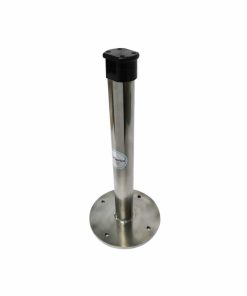 Plastica Slidelock Max Small Base Plate Telescopic Reel With Gearbox
Plastica Slidelock Max Small Base Plate Telescopic Reel With Gearbox 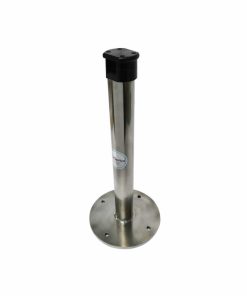 Plastica Slidelock Max Large Base Plate Telescopic Reel With Gearbox
Plastica Slidelock Max Large Base Plate Telescopic Reel With Gearbox  SUDS-ONLINE 50 x 20g Multifunctional Chlorine Tablets for Hot Tubs Swimming Pool
SUDS-ONLINE 50 x 20g Multifunctional Chlorine Tablets for Hot Tubs Swimming Pool 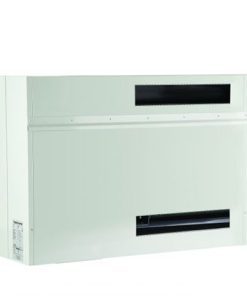 Certikin CDP50T dehumidifier - through wall and duct kit (consists of CDP50T and CDP50T/DUCT)
Certikin CDP50T dehumidifier - through wall and duct kit (consists of CDP50T and CDP50T/DUCT) 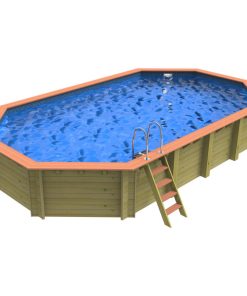 Plastica Westminster Wooden Pool Package with SwimMaster Counter Current With PLAIN liner
Plastica Westminster Wooden Pool Package with SwimMaster Counter Current With PLAIN liner ![CosySpa Hot Tub Chlorine Tablets [1kg PK] | Clean & Hygienic - Spa/Pool Water](https://www.thepoolcleaners.co.uk/wp-content/uploads/2025/01/DBPCLTAB205-1X1kgCOL30-247x296.jpg) CosySpa Hot Tub Chlorine Tablets [1kg PK] | Clean & Hygienic - Spa/Pool Water
CosySpa Hot Tub Chlorine Tablets [1kg PK] | Clean & Hygienic - Spa/Pool Water 
